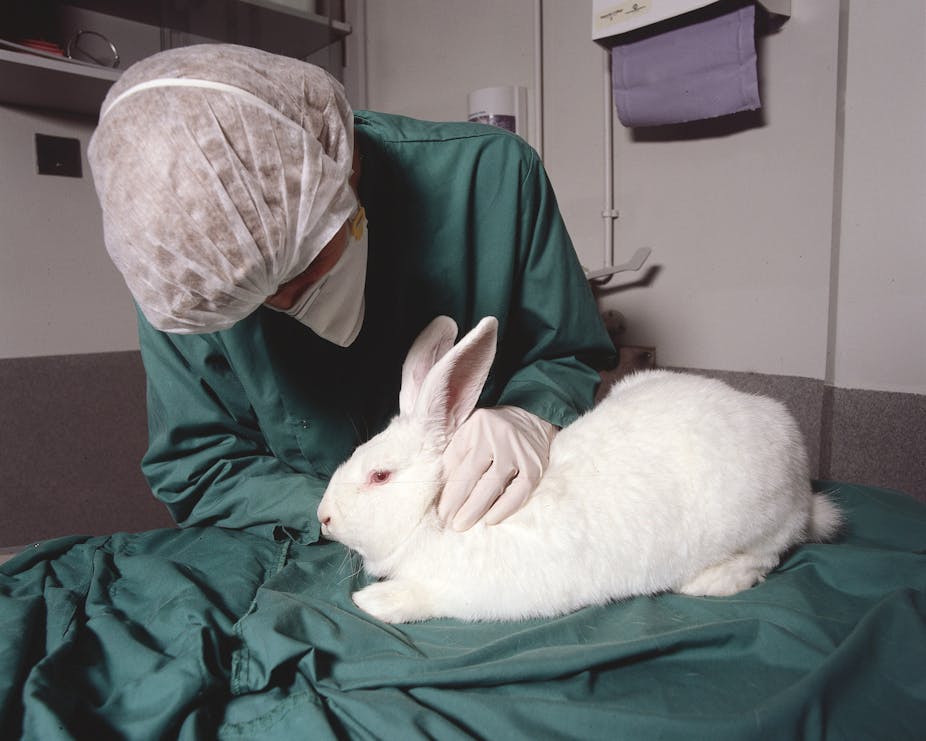Scientific research sometimes requires the use of animals. It’s a fact. And as long as that is the case, we need to do everything in our power to minimise the distress for laboratory animals. This is not just for the sake of the animals, but also for the sake of science itself. We know that the quality of life of an animal can actually affect its physiology and, thereby, the research data.
But unfortunately, the standards of animal care vary greatly across countries and even across research institutes. The time has come to overhaul this system and replace it with globally enforced rules.
Necessary evil
There are a lot of misconceptions about animal research, for instance what it is used for. Across the EU and in a number of other countries (including India, Israel, Norway and New Zealand), it is actually illegal to use animals to test cosmetics or household products. It is, however, allowed in medical research.
Animals are vital to medical research – they help us understand how drugs and genes function in our wonderfully complex bodies. By law, new compounds must be tested on animals before they can reach human trials. This is partly because humans are so genetically diverse and come from such a wide range of environments that we are not of much use in the initial phases of drug testing.
A lot of real breakthroughs in medical research would have been impossible without animals. Take the dogs in Emile Roux and Louis Pasteur’s research for example – they helped develop the human and canine rabies vaccines. Likewise, Frederick Banting and Charles Best’s work on diabetic dogs led to the discovery of insulin, arguably one of the most significant discoveries of the 20th century.
In reality, larger animals such as dogs play an increasingly minor role in animal research; more than 84% of studies are now conducted using mice, rats, and flies.

Thankfully animal research is highly policed in countries such as Australia, the USA, and the UK. Some institutes follow the rules and maintain the highest possible standards. For example, animal research in Australia is legally bound to follow the so-called “three R’s” – Reduction (of animal numbers), Refinement (to minimise distress) and Replacement (with non-animal models). They are also required to conduct ethical and humane research as described in The Australian Code for the Care and Use of Animals for Scientific Purposes.
Unfortunately, there are some instances, even in highly policed countries, where research doesn’t follow the guidelines, with some institutes and labs slipping through the cracks. Bad practices are much less likely to happen in countries where governing bodies review research proposals and conduct regular inspections. But they still happen.
Guidelines and policing are completely up to individual governments, which can be uninformed or lacking in funding. So what about countries with less stringent rules, such as Italy? Animal-based scientific research is common in Italy. But researchers feel that the occasional threats of institute inspections will almost never result in a real inspection.
In an ideal world, researchers should undergo extensive training to develop a keen eye for any kind of distress and to guarantee a high quality of life of the animals in their charge. In many countries this training, if it exists, doesn’t actually occur when new researchers join an institute. Animal facilities vary wildly in quality, and as such, both the quality of life of the animals, as well as the data itself, is compromised.
Bad animal practices, bad science?
Research has shown that data at the behavioural, cellular, and biochemical levels can be completely different depending on whether rats had access to enrichments (such as toys to play with, tunnels to run through, and things to climb). This can affect things like gene expression, hormones and are cell-signalling molecules called cytokines.
One study showed that mice born in an enriched environment developed more neurons in part of the brain. Another suggested that the progression of neurological disorders changed with environmental variation.
Monitoring environmental enrichments would both markedly improve the lives of research animals and also preserve data quality. Without such procedures, conflicting animal data is wasting both time and research funds. International collaborations often experience this, and research can drag on for years trying to sift through the muddy waters to find solid data.
Animal research in industry is actually easier to regulate because parent companies can set rules for all subdivisions to follow, regardless of the host country. Plus the number of labs is typically small enough to enable strict monitoring.
But what about academia – why haven’t we already done something about this? In some cases researchers are simply not trained properly. In others, overworked and often underpaid scientists are just trying to survive in an increasingly competitive research environment. Time wasted trying to change the established setup could mean loss of data, loss of papers, and thus compromised job security.
But we need to do something, and the shock tactics of animal rights activists are certainly not the best way of tackling this. Instead, changes need to be made at the level of government and science policy. There needs to be better training, and better monitoring of every single facility with international guidelines that are actually enforced. In an ideal world, researchers would come together with regulatory bodies and government representatives, agree on global standards, and stick to them.
With time and a lot of determination, it may be possible to achieve worldwide collaboration on such a project, and both the animals and the data will be better for it.

